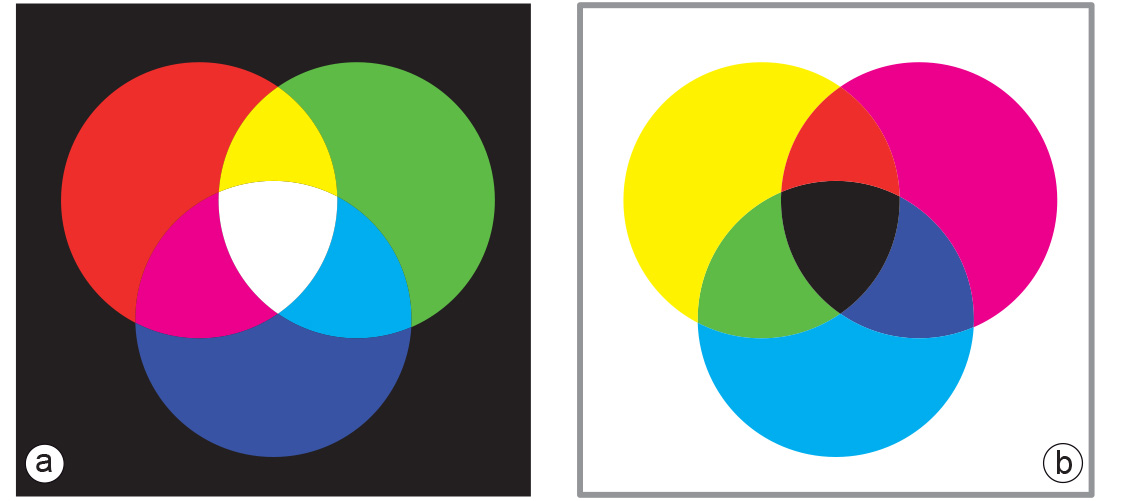RGB
Introduction
The Red-Green-Blue (RGB) definition of colour is based on the additive mixing principle of colour and is directly related to the way in which computer and television screens function.
Explanation
When we look at the result, our brain combines the stimuli from the red, green and blue dots and enables us to perceive all possible colours from the visible part of the spectrum. During the combination, the three colours are added. We see yellow when green dots are illuminated in addition to red ones. This principle is called the additive colour scheme. Figure 1 illustrates the additive colours caused by activating red, green and blue dots on a monitor. When only red and green light is emitted, the result is yellow. In the central area, there are equal amounts of light emitted from all three dots, so we experience white.

In the additive colour scheme, all visible colours can be expressed as combinations of red, green and blue, and can therefore be plotted in a three-dimensional space with R, G and B each being one of the axes. The space is bounded by minimum and maximum values for red, green and blue, thus defining what is known as the colour cube. The Figure 2 below the normalized colour cube; the maximum value for each colour is set to 1.

Prior knowledge
Outgoing relations
- RGB is a kind of Colour space
- RGB is based on Tri-stimuli theory
- RGB is part of EM spectrum
- RGB is used by True colour